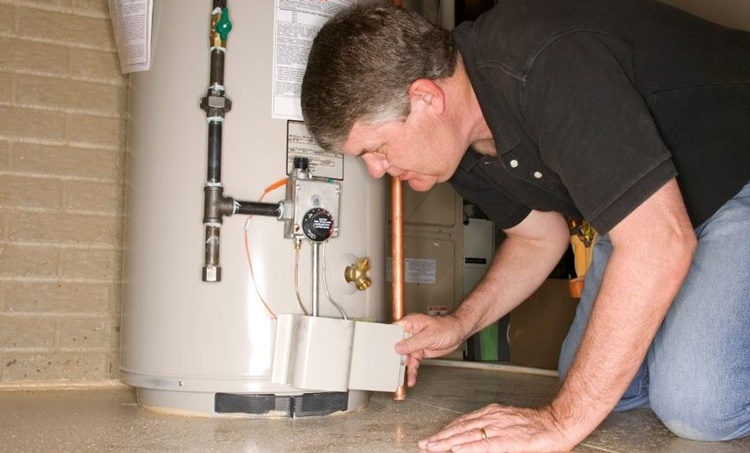How to Successfully Care for Your Home's Hot Water System
How to Successfully Care for Your Home's Hot Water System
Blog Article
The article further down on the subject of Tips on Maintaining a Water Heater is relatively fascinating. Check it out for yourself and figure out what you think about it.

Warm water is important for daily convenience, whether it's for a revitalizing shower or washing meals. To guarantee your hot water system runs effectively and lasts much longer, normal upkeep is key. This short article offers sensible pointers and understandings on just how to keep your home's hot water system to prevent disturbances and expensive fixings.
Introduction
Keeping your home's hot water system may appear difficult, yet with a couple of easy steps, you can guarantee it runs smoothly for many years ahead. This guide covers whatever from recognizing your hot water system to DIY upkeep pointers and knowing when to hire expert aid.
Importance of Maintaining Your Warm Water System
Normal maintenance not just expands the lifespan of your hot water system however likewise guarantees it operates efficiently. Ignoring upkeep can lead to decreased effectiveness, greater power bills, and even premature failing of the system.
Indicators Your Warm Water System Requirements Upkeep
Understanding when your warm water system requires interest can avoid major problems. Watch out for signs such as inconsistent water temperature, unusual noises from the heater, or rusty water.
Understanding Your Hot Water System
Prior to diving right into upkeep jobs, it's valuable to understand the basic parts of your warm water system. Commonly, this consists of the water heater itself, pipelines, anode poles, and temperature level controls.
Regular Monthly Upkeep Tasks
Normal regular monthly checks can assist catch minor issues prior to they intensify.
Flushing the Water Heater
Purging your hot water heater eliminates sediment buildup, boosting performance and extending its life.
Checking and Replacing Anode Rods
Anode poles stop corrosion inside the tank. Evaluating and changing them when worn is crucial.
Evaluating and Changing Temperature Setups
Changing the temperature setups makes sure optimum efficiency and security.
DIY Tips for Upkeep
You can carry out numerous upkeep tasks on your own to keep your hot water system in leading condition.
Looking for Leakages
Routinely check pipes and links for leaks, as these can lead to water damage and greater expenses.
Testing Stress Relief Valves
Examining the pressure relief valve guarantees it functions appropriately and avoids too much pressure buildup.
Protecting Pipes
Protecting hot water pipelines reduces warm loss and can save power.
When to Call a Professional
While do it yourself maintenance is helpful, some issues need professional know-how.
Facility Problems Needing Professional Help
Instances include major leakages, electrical issues, or if your hot water heater is regularly underperforming.
Routine Specialist Maintenance Perks
Professional maintenance can consist of extensive inspections, tune-ups, and making certain compliance with safety and security requirements.
Verdict
Routine upkeep of your home's hot water system is essential for effectiveness, long life, and expense financial savings. By complying with these ideas and knowing when to seek specialist aid, you can guarantee a reliable supply of hot water without unanticipated disruptions.
How to Maintain an Instant Hot Water Heater
Before tinkering with your hot water heater, make sure that it’s not powered on. You also have to turn off the main circuit breaker and shut off the main gas line to prevent accidents. Also turn off the water valves connected to your unit to prevent water from flowing into and out of the appliance. 2. When you’re done, you have to detach the purge valves’ caps. These look like the letter “T†and are situated on either side of the water valves. Doing so will release any pressure that has accumulated inside the valves while at the same time avoid hot water from shooting out and burning your skin. 3. When the purge valves’ caps are removed, you have to connect your hosing lines to the valves. Your unit should have come with three hoses but if it didn’t, you can purchase these things from any hardware or home repair shops. You can also get them from retail stores that sell water heating systems. Read the user’s manual and follow it to complete this task properly. When the hosing lines are connected, open the purge port’s valves. 4. You should never use harsh chemical cleaners or solutions when cleaning your unit. Make use of white vinegar instead. It should be undiluted and you’ll probably use about 2 gallons. 5. Now flush your water heater. This task should probably take about 40 minutes. We can’t give you specific directions for this because the procedure is carried out depending on the type, model and brand of your heater. With that being said, refer to the user’s manual. 6. When you’re done draining the unit, you have to turn off the purge port valves again. Remove the hosing lines that you earlier installed on each of the water valves. Put the valve caps (purge port) back in their respective places and be very careful so as not to damage the rubber discs that are found inside these caps. 7. Now that everything’s back in place, check your user’s manual again to find out how to reactivate your water heating system. 8. Once it is working, turn one of your hot water faucets on just to let air pass through the heater’s water supply pipes. Leave the tap on until water flows smoothly out of it. https://www.orrplumbing.com/blog/2014/september/how-to-maintain-an-instant-hot-water-heater/

I came across that blog entry on Water Heater Maintenance Tips You Can't Afford to Forget when surfing the search engines. Are you aware of anybody else who is truly interested in the niche? Do not hesitate to share it. Many thanks for your time spent reading it.
Call Today Report this page